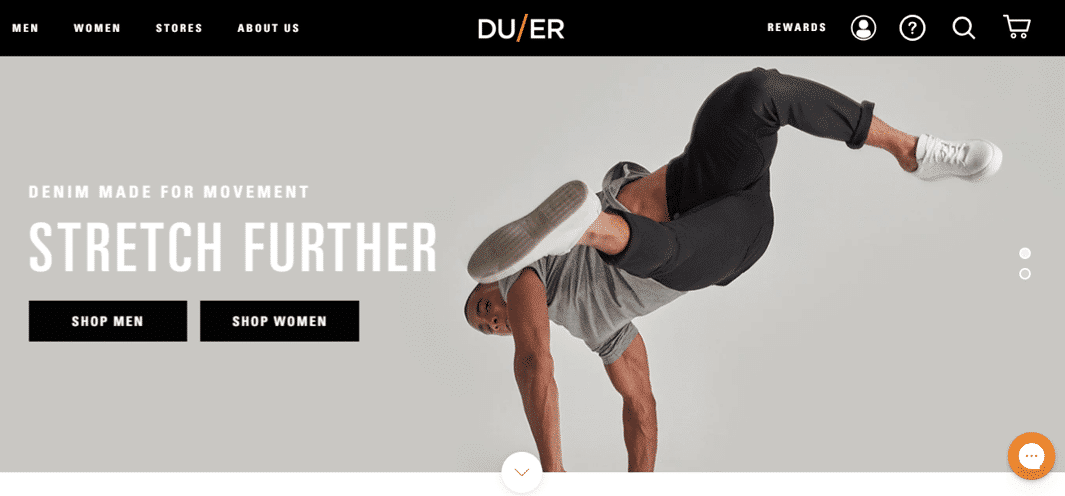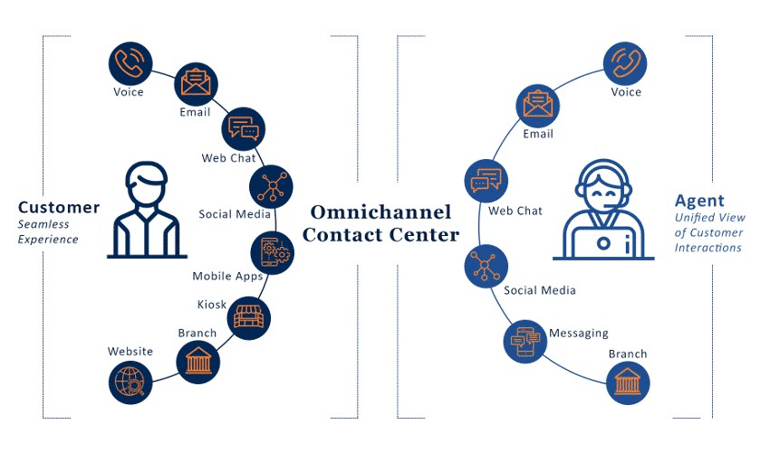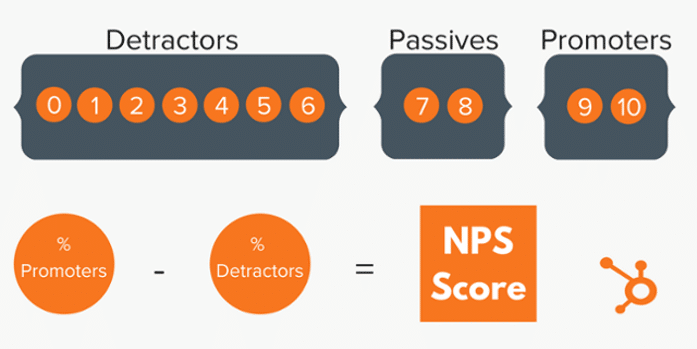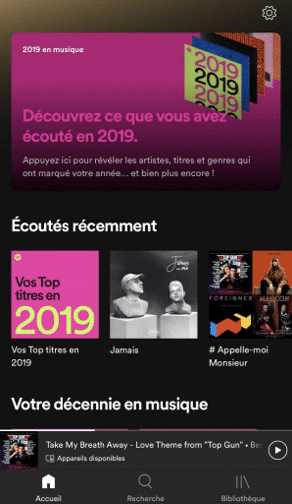Customer Experience Specialist
The secret to long-lasting client relationships
Customer Experience Specialist
Discover how you can succeed at relationship marketing using these nine tips: Brand image, target audiences, personas… And download the checklist!
Happy (corporate) Valentine’s Day!
This period of romantic love is also a great time to think about the relationships you have with your clients and prospects, and to evaluate your relationship marketing — or at least to consider it as a strategy.
As you know, if you want your business to thrive, you need to acquire new clients, but more than that you need to maintain and nurture the business relationships you’ve built with your existing and potential clients.
Before we go into any further detail, let’s look at what relationship marketing is, exactly.
Relationship marketing: Definition
Relationship marketing is a form of marketing developed from direct response marketing campaigns that emphasises customer retention and satisfaction rather than sales transactions. It differs from other forms of marketing in that it recognizes the long-term value of customer relationships and extends communication beyond intrusive advertising and sales promotional messages. With the growth of the Internet and mobile platforms, relationship marketing has continued to evolve as technology opens more collaborative and social communication channels such as tools for managing relationships with customers that go beyond demographics and customer service data collection. Relationship marketing extends to include inbound marketing, a combination of search optimization and strategic content, public relations, social media and application development.
Unlike traditional marketing, which targets broad audiences with the same messaging in the aim of generating short-term results, relationship marketing focuses on retention, customer lifespan and satisfaction, unlike the sales side. It’s a strategy that plays out over the long term in the form of personalized, 1-1 conversations, and a unique, continuous, quality relationship that adapts to the needs and language of your target audience. Communication happens regularly, at meaningful times and over a long period of time to generate customer loyalty.
Relationship marketing is essential in order to offer your clients an optimal user experience. Especially since a returning customer buys more, more often, and therefore has a bigger impact on your sales revenue than a one-off customer.
Ok, so it’s an essential strategy. Got it. But what do you need to take into account if you want to do relationship marketing right? It’s simple — just follow these nine principles.
9 principles to help you succeed at relationship marketing
Interested in evaluating your relationship marketing? Download our checklist summarizing this article to have all the principles of relationship marketing strategy at your fingertips!
Fill the fields below to get the download link.
First part: Research and acquisition
1. Brand image: Attract attention and interest with a unique personality
It’s important to be well-positioned in relation to the competition, but also in relation to the expectations of your customers and prospects. To attract and hold the attention of your target market, you have to understand what makes them identify with you and your values, what tone to use, what messages will resonate most, the channels you’ll need to be present on and the terms being used in searches. And don’t forget to measure your brand equity, too!

Your brand image needs to represent who you are. Duer does a great job of communicating their identity right on their homepage; it’s clear that their jeans are made for action through the image and the tagline, “Denim made for movement.”
Keep in mind that building your identity is a never-ending job; your brand will always be evolving along with your audience. Take McDonald’s, for example. The brand has grown into the brand we know today by constantly adapting, trying new things and making mistakes.

2. Target audience and personas: Find the shoe that fits
We can’t say it too often, to succeed at relationship marketing and marketing in general, it’s essential to know your target audience, your ideal customer.
Start by building personas, using your experience or by conducting user research to figure out your users’ needs, problems and frustrations, and from there, decide which subjects to tackle on their preferred channels to attract the attention of the target audience you’ve identified. They’ll be drawn to you, not only because they know the brand, but also because of the content you’ve shared that resonates with their expectations and situations.
3. Lead qualification: Validate the fit
Once you’ve attracted the attention of your target audience and they’ve converted by buying a product/service, engaging with your content (downloading a whitepaper, attending a webinar…), signing up for a contest, a newsletter, etc., you next have to ensure that these leads correspond to the profiles you’ve been targeting, so you can be sure that you’re addressing your target audience properly (with the right messages, in the right places, etc.) and focusing your energy on the right people.

Sometimes the basic information will be easy to collect, but you’ll find you’ve ended up with a group whose level of interest is low (site visits, social media interactions, downloads). That’s why it’s so important to further qualify and segment your contacts with, for example, automated lists and a scoring model that includes positive and negative attributes depending on the data you’ve collected, to prioritize your leads and marketing efforts.
4. Omnichannel approach: Use all the channels to communicate with your prospects and customers
Users no longer distinguish between channels when they’re speaking to a brand. They expect exemplary reactivity (whether they’re prospects or customers) regardless of their preferred communication channel.
According to a HubSpot study, when engaging with customer service, 62% of people want to communicate through email, 48% through the phone, 42% using live chat and 36% through a “Contact Us” form.
It’s easy to understand the importance of identifying customers’ preferred points of contact, and building a unified view of customer interactions. We’re talking about a “seamless” customer journey.

Second part: Conversion & Retention
5. Individualized follow-up: Invest in a unique relationship
Once you’ve prioritized your leads and identified your ideal customers, you’ll have a much higher likelihood of converting people.
A follow-up program will allow you to further engage your leads with your brand. Even if you leads aren’t ready to take action, a program like this will keep you top of mind, and move people through your conversion funnel.
Consider a lead nurturing program based on people’s profiles, needs or the actions they’ve taken by sharing — depending on your industry and personas, advice, articles, content or trial offers.
If you have the necessary resources, launch a loyalty program to pamper your customers by offering them perks like a VIP program, exclusive offers, invitations to preview events, targeted promotions, etc.
6. Disengaged leads/customers: Understand what isn’t working
Satisfying your customers by quickly identifying their frustrations and addressing the problems they raise is critically important. According to a PwC survey, one customer in three will abandon a brand they like after a single bad experience, while 92% of customers will completely abandon a company after two or three negative experiences.
To better understand your customers and probe their sentiment about your brand, consider sending a satisfaction survey or asking them to leave you feedback evaluating a product or service after they received it, then make sure you act on their feedback as quickly as possible.
Communicate with your customer service team; they have detailed knowledge of what needs to be improved, and the marketing department can benefit from this information by creating content that aims to reassure customers, for example. Plus, 73% of customers say they’ve fallen in love with a brand and remained loyal because of friendly customer service reps.
Measure customer experience using the Net Promoter Score. This indicator measures how likely your customers are to recommend your business.

7. Communication: An open exchange
Like in any relationship, communication is key. Communicating often, and in a way that’s both relevant and transparent will allow you not only to establish trust, but also to foster an increased appreciation for your brand.
Don’t just wait to react to problems, respond to negative comments or talk only when everything is going well or you want people to think that all is going well.
Share information, send an alert when a delivery will be late, explain that you were the victim of a cyber attack and how you plan to remedy the situation, explain that the email they recently received was the result of human error, etc.
8. Spoil your customer with something custom: Personalize the experience
After having identified your target audience and their interests, you’ll know what to offer them to personalize their omnichannel experience and deliver maximum satisfaction.
Personalization initiatives can add major value, notably by increasing sales revenue by an average of 10-30% as well as increasing customer acquisition and engagement rates.
For example, in retail, 59% of buyers think it’s easier to find interesting products if the online purchase experience is personalized. Even more interesting, 64% of online buyers are willing to share their personal data as long as they get some sort of benefit in exchange.
By accompanying the user on their journey and integrating the elements they’re looking for at the right times, in the right places and in a language that will resonate, you are calling out to them, you are giving them an experience that makes them happy. You become top of mind, a point of reference, and you have a greater chance of limiting, even erasing any friction they might have on their journey.
To put this into context, Spotify and Deezer are known for offering a personalized playlist of their listeners’ top songs. The bonus? You can share it with your network, guaranteeing maximum virality!


To learn more about marketing and personalization, check out our article:
9. Automation and IA
A company has not one, but a multitude of relationships.
To be able to satisfy the needs of each person in your target audience, you have to stay efficient and optimize your time. For that, automating your tasks is essential. Enter marketing automation for sending emails, triggering texts based on certain user actions (making a purchase, downloading, clicking an email, etc.), dates (birthdays, etc.), calculations of points scored, progression through the conversion funnel, etc.
Given the volume of data marketers possess and the ocean of available marketing actions that are possible, your choice of tools is key for allowing you to accomplish everything you need to, depending on your business context. It’s a choice that shouldn’t be made lightly. To guide you, here are 50 questions to ask yourself before you start building your marketing automation strategy.
Here’s an article that might interest you:
→ Boost your marketing automation efforts with data
Our recent article on Artificial Intelligence and marketing talks about the challenges marketing faces in relation to Big Data and the omnichannel approach, and proposes a solution that draws from AI:
The main business motivation is to excogitate AI-powered consumer insights from your data, from which you can improve your marketing strategy, optimize and automate global campaign efforts (not just Facebook Ads or HubSpot in silos) and feed business intelligence teams with new questions.
Want to develop a relationship marketing strategy but not sure where to start? Contact us! We would be happy to help.
%20(1)-1.jpg)













